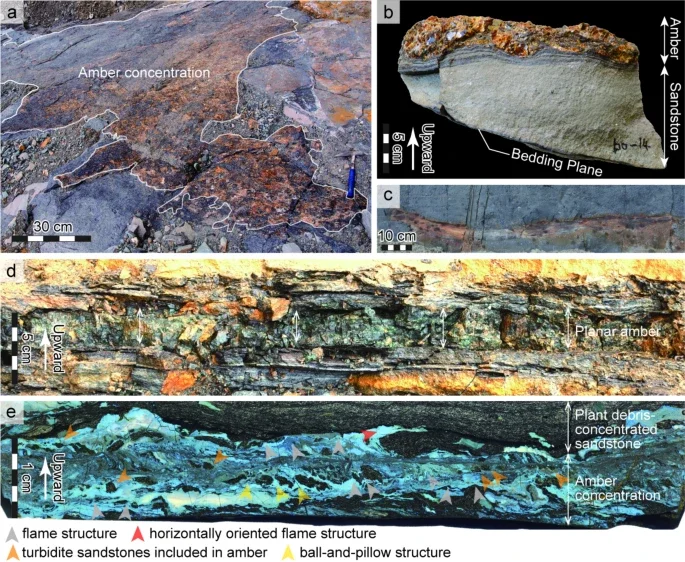Our Terms & Conditions | Our Privacy Policy
Scientists discover possible evidence of a 116-million-year-old tsunami recorded in amber
For free real time breaking news alerts sent straight to your inbox sign up to our breaking news emails
Sign up to our free breaking news emails
Sign up to our free breaking news emails

Scientists believe they have found evidence of a 116-year-old tsunami in amber, potentially the oldest recording of one to date.
Investigating deep-sea sediment on Hokkaido Island in northern Japan, researchers Aya Kubota, Yusuke Takeda, Keewook Yi, Shin-ichi Sano and Yasuhiro Iba discovered “extraordinarily rich amber concentrations” in sediment from the early Cretaceous period, dating to between 116 and 114 million years ago.
In a report on their findings, published in Nature’s Scientific Reports, the researchers suggested the amber had likely been swept into the ocean by one or more tsunamis, with little contact with air.
Amber, which is fossilised tree resin, is a relatively fast drying substance. The researchers said it usually solidifies in as little as a week when exposed to air.
But in the sediment examined by researchers, they found “distinctively deformed” amber deposits, some deformed with so-called flame structures suggesting the resin was being altered by flowing water, and other flat bands of amber suggesting that soft resin had “flowed and spread viscously into the seafloor”.

open image in gallery
The researchers looked at ancient ocean sediment and found possible evidence of tsunamis (Aya Kubota/Yusuke Takeda/Keewook Yi/Shin-ichi Sano/Yasuhiro Iba)
“The most plausible cause for the presence of this enigmatic amber in a deep-sea setting is large-scale tsunamis,” they said.
“These resin deformations occurred underwater, implying their direct transport from the forest to the pelagic seafloor. Such rapid and direct transport of terrestrial materials from land to ocean could be driven by a tsunami.”
The researchers said other evidence in the ancient sediment backed up that theory, including large amounts of plant debris from land and large driftwood chunks, which bore little evidence of decay that suggested “rapid transportation” out to the open ocean.
“The occurrence of the trunks in the claystone … indicates that the enormous number of wood was discharged, drifted, and sank to the pelagic sea floor, not transported by turbidity currents,” the paper said.
They suggested that other open ocean sediments could provide more evidence of large-scale ancient tsunamis or similar events.
The researchers said tsunami deposits aren’t normally identified any earlier than the young Holocene period, or from roughly 4,200 years onwards, due partially to the lack of definite features in the widespread destruction they cause.
Images are for reference only.Images and contents gathered automatic from google or 3rd party sources.All rights on the images and contents are with their legal original owners.



Comments are closed.